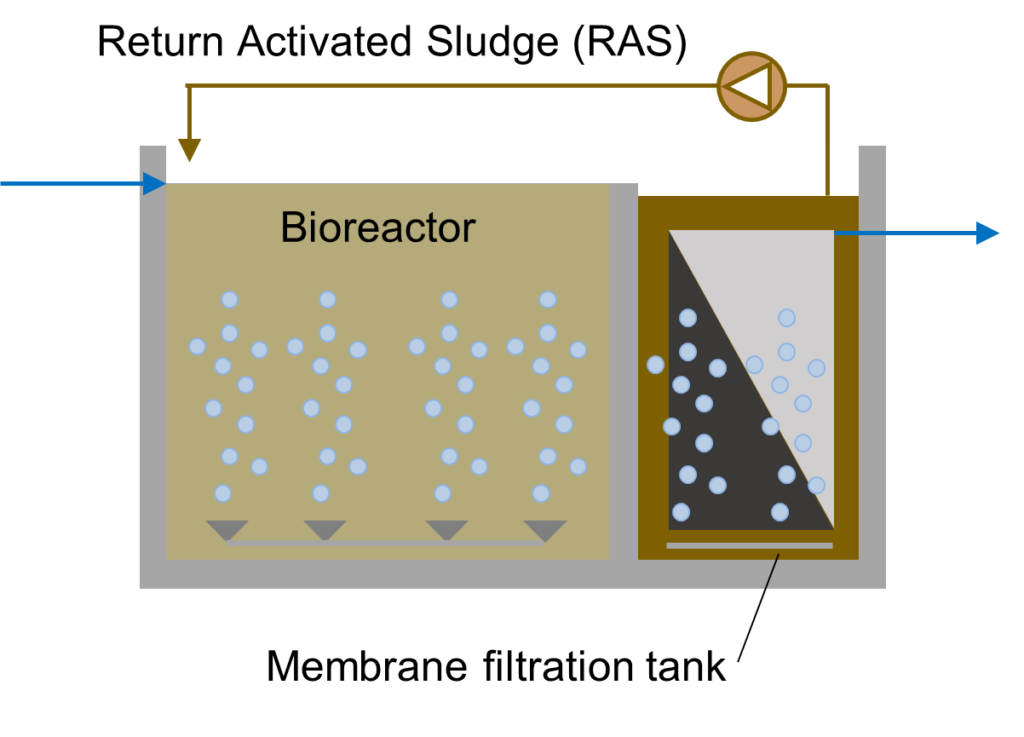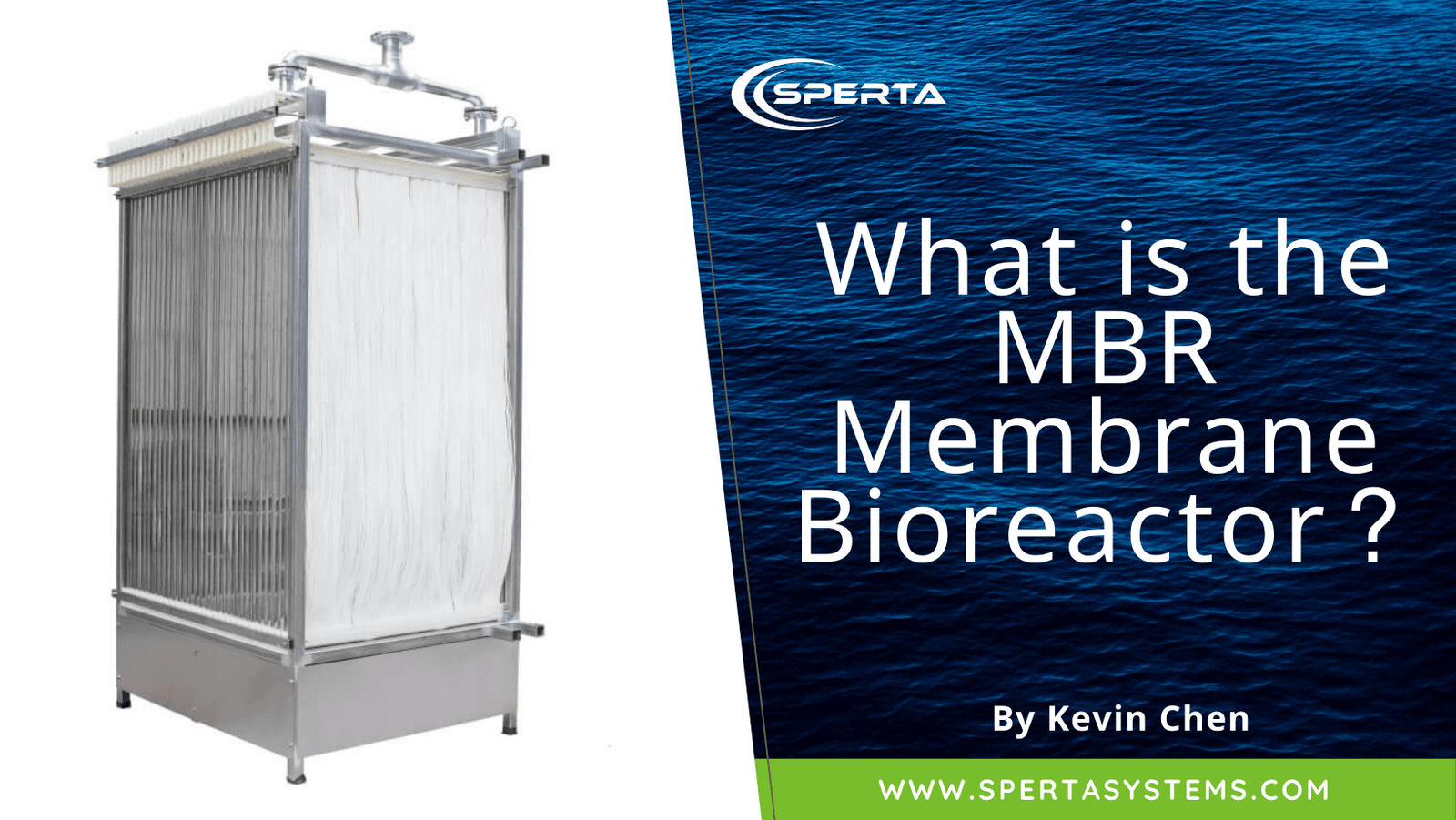Membrane Bioreactor Systems: A Key Technology for Water Reuse and Recycling
Membrane Bioreactor Systems: A Key Technology for Water Reuse and Recycling
Blog Article
Recognizing Membrane Layer Bioreactors: The Future of Wastewater Therapy
Membrane layer bioreactors (MBRs) represent a noteworthy technology in the area of wastewater treatment, incorporating biological procedures with sophisticated membrane filtering to enhance effluent top quality. As worldwide water deficiency and strict regulatory frameworks come to be progressively pushing problems, MBR modern technology provides a reliable reaction via its capability to decrease footprint and enhance source healing.
What Are Membrane Layer Bioreactors?

The core components of MBR systems include a bioreactor where microbial task happens and a membrane unit that filterings system the blended liquor. This twin performance allows the simultaneous destruction of raw material and solid-liquid splitting up in a single step. MBRs can run in both submerged and exterior setups, with submerged systems being extra typical due to their portable style and functional effectiveness.
The adoption of MBR modern technology has obtained traction in various applications, ranging from municipal wastewater therapy to industrial effluent administration. MBRs are particularly useful in situations where room is rigid or limited effluent high quality criteria should be fulfilled. By preserving a high focus of microorganisms within the bioreactor, MBRs improve the destruction of organic toxins, thereby producing greater treatment effectiveness contrasted to traditional techniques.
Key Benefits of MBR Technology
The integration of biological therapy with membrane layer purification in MBR systems supplies countless benefits that establish it in addition to conventional wastewater treatment techniques. One of the primary benefits is the boosted effluent high quality. MBRs properly remove suspended solids and pathogens, attaining higher levels of purification that fulfill rigorous discharge criteria and assist in water reuse applications.

Another considerable benefit is the lowered sludge manufacturing. MBR systems create less excess sludge, leading to lower disposal costs and a reduction in environmental effect. The closed nature of the membrane layer system minimizes the risk of odor emissions and enhances overall process control.
Lastly, MBRs are versatile and adaptable, making them suitable for various wastewater kinds, consisting of commercial and metropolitan resources. The capability to integrate with sophisticated treatment technologies further enhances their performance, making MBRs an encouraging remedy for the future of wastewater monitoring.
Difficulties and Limitations of MBRs
While MBR innovation provides various benefits, it additionally deals with a number of challenges and constraints that can influence its extensive adoption. One substantial obstacle is the high funding and operational prices connected with MBR systems. The initial financial investment for membrane layer materials and the essential facilities can be substantial, making it much less easily accessible for smaller districts or markets.
Furthermore, membrane layer fouling stays a crucial concern that can reduce system performance and boost upkeep demands. Fouling takes place when solids, organic issue, or bacteria gather on the membrane surface area, resulting in lowered permeability page and calling for frequent cleansing or substitute.
Another constraint involves the complexity of the modern technology. MBR systems require knowledgeable personnel for procedure and upkeep, which can be a barrier in regions with minimal technological know-how. The disposal of invested membrane layers offers environmental issues, as the materials are commonly not eco-friendly and can contribute to waste administration difficulties.
Finally, while MBRs can properly deal with a wide variety of wastewater, they may not be suitable for all applications, especially those with high concentrations of fats, oils, and greases, requiring additional research study and advancement to attend to these restrictions.
Applications of Membrane Bioreactors
In various industries, membrane bioreactors (MBRs) have emerged as a functional option for wastewater therapy (Membrane Bioreactor). Their applications cover local, industrial, and agricultural settings, showcasing their flexibility and anonymous performance in varied atmospheres. In community wastewater treatment plants, MBRs significantly boost effluent top quality, permitting water reuse and decreasing the environmental influence of discharged wastewater
Industrially, MBRs are used in food and drink processing, fabric production, and pharmaceutical production, where they effectively deal with high-strength waste streams. Their capacity to deal with varying and fluctuating lots pollutant focus makes them especially important in these sectors. In addition, his explanation MBRs help with the elimination of microorganisms, suspended solids, and raw material, adding to compliance with rigorous discharge policies.
In farming, MBRs are progressively used for treating farming overflow and animals wastewater, allowing the recuperation of nutrients for fertilizer manufacturing. They also help in the treatment of greywater for irrigation, advertising sustainable water administration techniques.
The adaptability of MBRs is further confirmed by their assimilation with other innovations, such as anaerobic food digestion and advanced oxidation processes, boosting overall performance and source recuperation in wastewater treatment systems.
The Future of Wastewater Treatment
Innovations in technology and a growing focus on sustainability are forming the future of wastewater treatment. Membrane bioreactors (MBRs) exemplify this change by incorporating biological treatment processes with membrane layer purification, causing premium effluent appropriate for reuse. The fad in the direction of circular economic climates is triggering centers to take on MBRs for their ability to recover resources, such as water and nutrients, from wastewater.
Developments in membrane layer products and arrangement are boosting the performance and long life of MBR systems, reducing operational costs and energy consumption. Smart technology integration, including real-time monitoring and automated control systems, is further optimizing performance and enabling predictive upkeep, hence decreasing downtime.
In addition, societal expectations and regulatory stress are pressing districts and markets to adopt more lasting methods. Membrane Bioreactor. The shift towards decentralized wastewater therapy options is getting traction, allowing for local therapy that decreases transportation prices and energy use
Verdict
Membrane layer bioreactors (MBRs) represent a transformative approach to wastewater therapy, integrating organic procedures with advanced membrane layer innovation. The advantages of MBRs, consisting of improved effluent quality, lowered spatial demands, and reduced sludge manufacturing, position them as a feasible service in the middle of expanding urbanization and stricter ecological regulations. Regardless of existing challenges, the ongoing development in membrane layer materials and functional techniques assures to reinforce the efficiency and adoption of MBRs, guaranteeing their pivotal function in the future of sustainable wastewater administration.
Membrane layer bioreactors (MBRs) represent a significant innovation in the area of wastewater therapy, integrating organic procedures with advanced membrane layer purification to enhance effluent top quality.Membrane bioreactors (MBRs) integrate organic therapy processes with membrane filtering to effectively treat wastewater.The combination of organic therapy with membrane filtering in MBR systems supplies numerous benefits that establish it apart from conventional wastewater therapy techniques. Membrane layer bioreactors (MBRs) exhibit this shift by integrating biological treatment processes with membrane layer purification, resulting in high-quality effluent appropriate for reuse.Membrane bioreactors (MBRs) stand for a transformative technique to wastewater therapy, incorporating organic procedures with innovative membrane layer modern technology.
Report this page